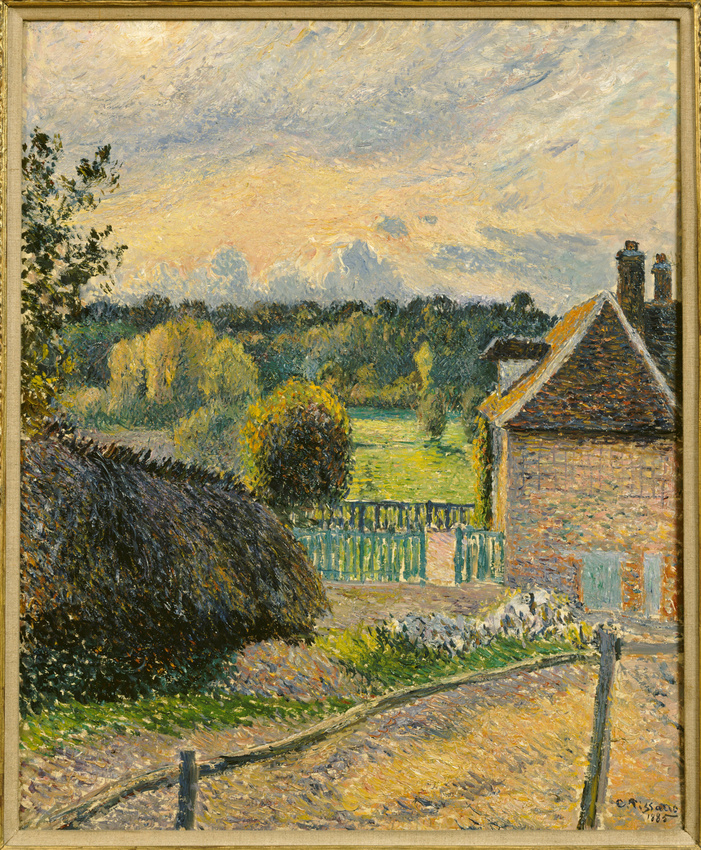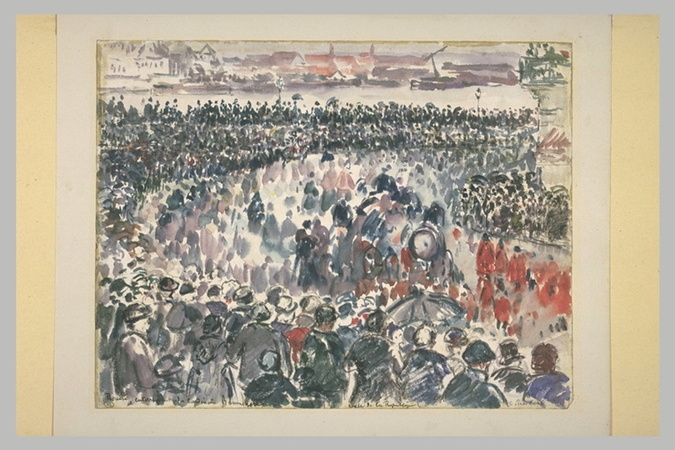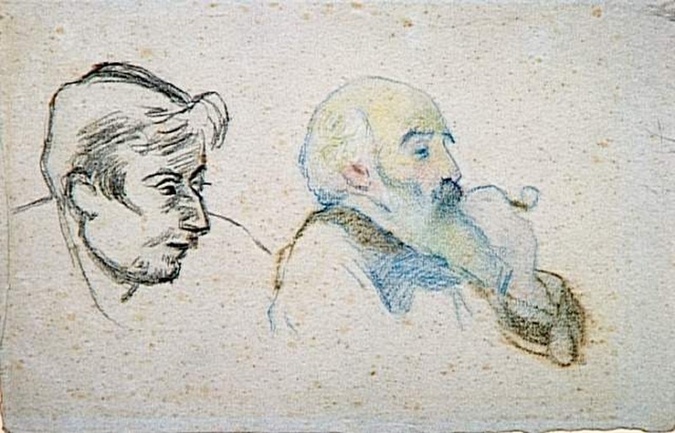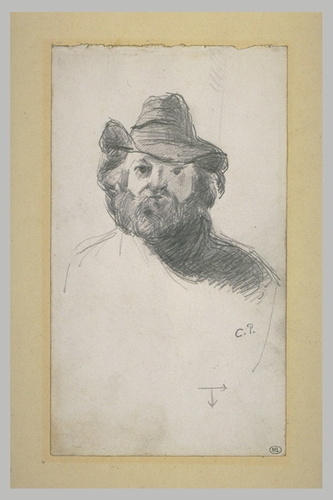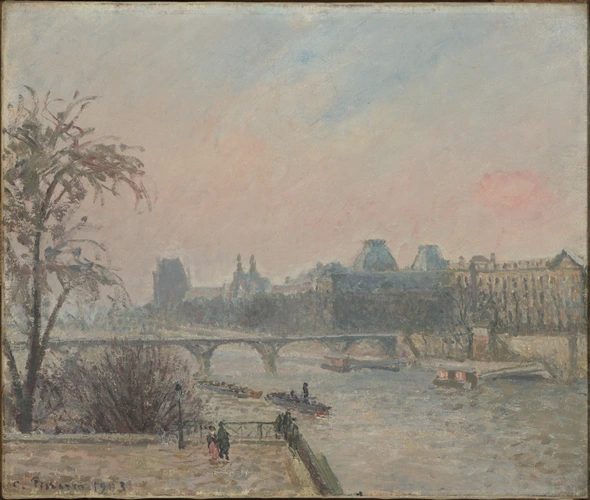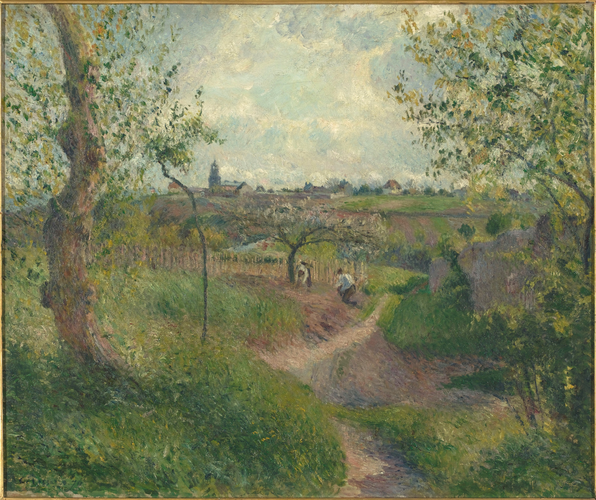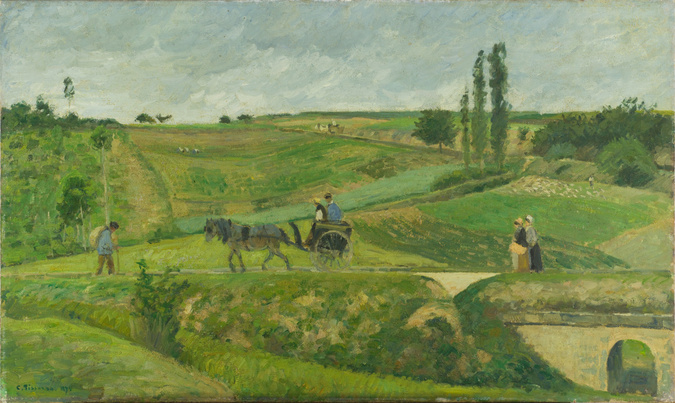La Maison de la folie à Eragny
1880 to 1885 were difficult years for Pissarro financially and mark a definite development in his way of painting. This had as much to do with the common way of thinking in the group at Pontoise (Cézanne, Gauguin, Guillaumin) as with his personal experiments into light and its effects.
In 1882, Pissarro left Pontoise for Osny before moving to Eragny-sur-Epte in 1884. He died there in the house he bought in 1892. The House of Follys dates from his arrival in Eragny.
Like Cézanne's The House of the Hanged Man (1873, Musée d'Orsay), the title reflects the traditional toponymy, emphasising that the work is firmly based in a specific memory and region. The composition, without a clearly defined perspective opening, is characteristic of the pictures of this period. Gauguin would exploit, even in 1885, this kind of plastic organisation where areas overlap rather than give depth to the space. The result is a kind of mysterious torpor, a great silence. In the foreground, the line of the fence, very Japanese in the way it bursts into the picture and then pauses, also anticipates some of the future painting by Gauguin and Cézanne.
Although the density of the composition is surprising, its luminous vibration is also striking in its intensity. The colours have a joyful passion and effervescence about them, a far cry from the melancholy in the works from his previous period. Light greens, acid yellows, oranges and mauves make up a palette which seem to lead Pissarro, the following year, to the Neo-impressionism of Seurat and Signac
